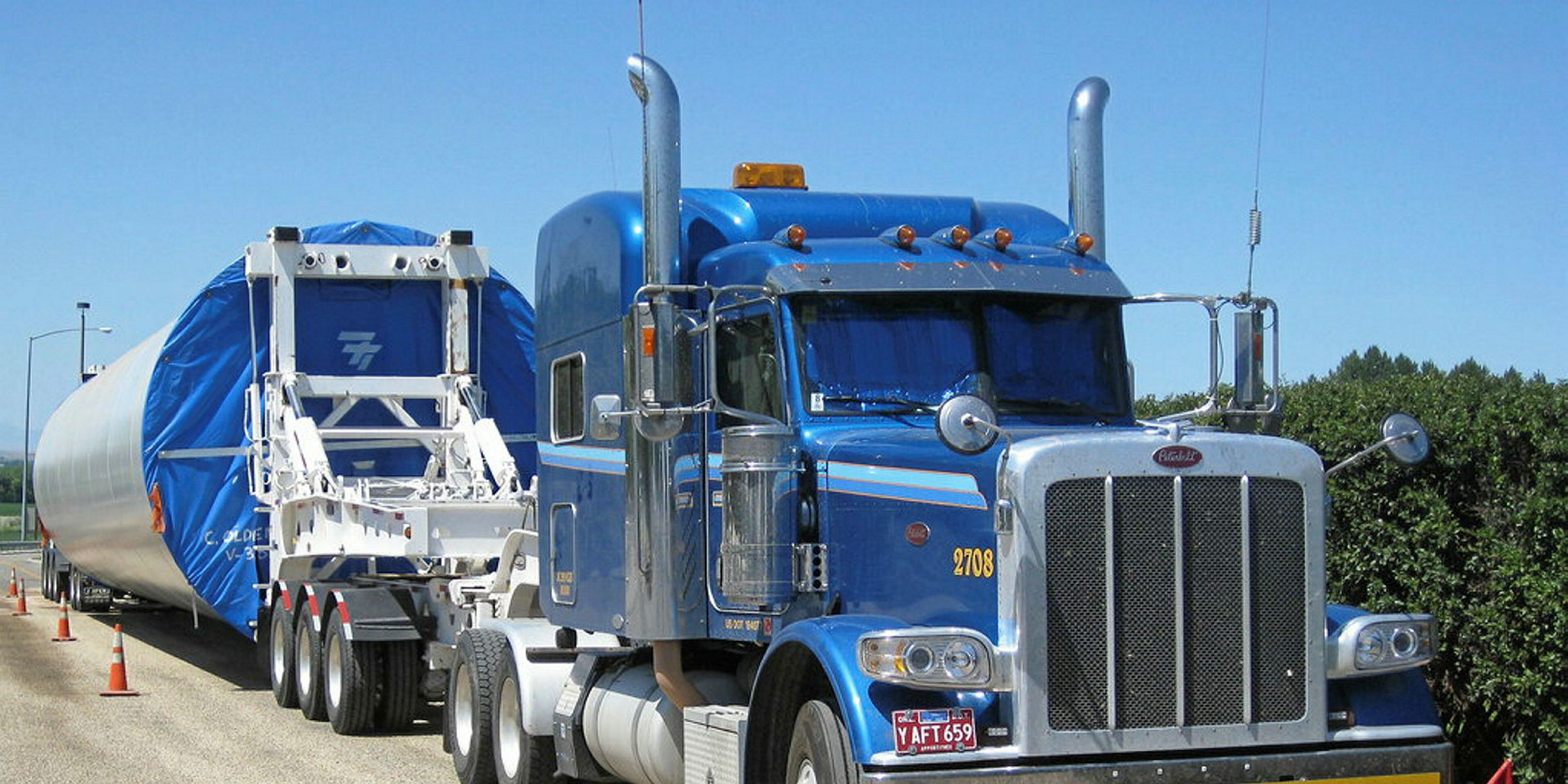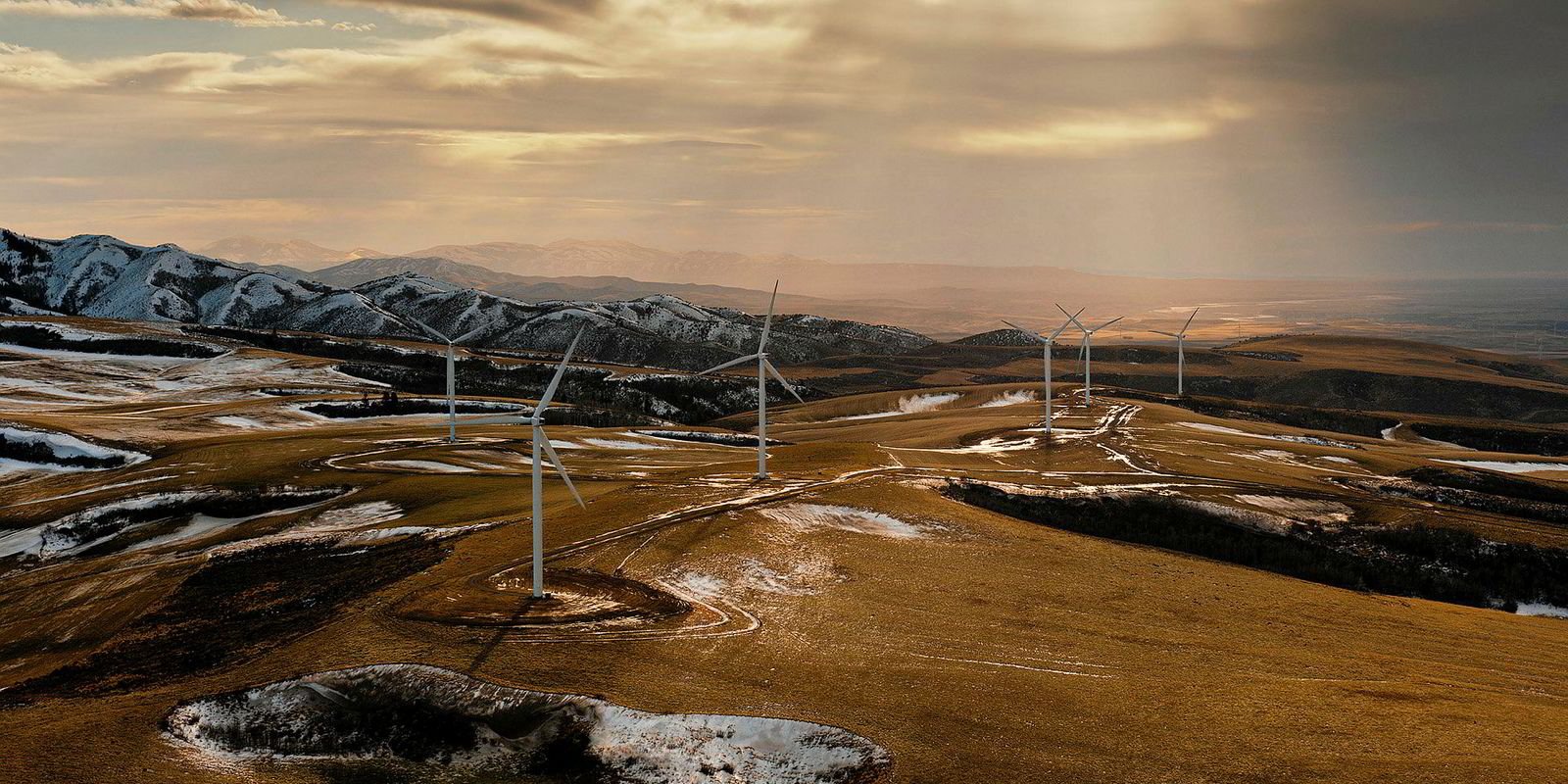Amid growing excitement over the potential economic and safety advantages of self-driving vehicles – including trucks – one veteran trucking executive has a warning for the US wind industry: Don’t count on drivers disappearing any time soon.
With the US wind industry hunting for any financial edge as the production tax credit (PTC) reduces and then expires permanently in 2020, one intriguing possibility on the horizon is the advent of driverless trucks.
The North American wind sector relies on truckers to transport huge components across the vast continent, and transportation and logistics are a minor but by no means insignificant portion of the overall capital cost of a wind farm.
Phil Byrd, chief executive of Georgia-based Bulldog Hiway Express, a trucking company that has worked in the wind sector for more than a decade, says there are technological advancements in the offing that could help wind developers with their transportation costs. But drivers aren’t going anywhere, he claims.
“Autonomous vehicles is an issue I’ve been very close to for a long time,” Byrd told a recent industry conference
“[They] will have a place in our industry and in certain geographical regions of our country. But they will never do away with a need for a driver – or a pilot – for that vehicle, and particularly in the wind energy sector.”
Bulldog Hiway Express has handled “tens of thousands” of shipments for the US wind industry over the past decade, including moving nacelles, towers and blades across the US and Canada. The company also works with the solar industry.
Even more than many other sectors that rely on trucking, the wind industry – with its enormous components – has “regulatory and compliance issues to deal with, securement issues, unexpected congestion issues”, Byrd says.
“There are many issues that autonomy will not satisfy in the open-deck market.”
Rather than drivers becoming less of an issue for the wind sector, they may well become more a headache in the years to come.
A looming driver shortage is a “tremendous challenge” for the $700bn US trucking market – with 90,000 new drivers needed each year over the next decade just to keep up with retirements and the booming economy, Byrd says.
Many in Silicon Valley are more optimistic about the potential for autonomous driving technology to have a big near-term impact on the trucking industry.
In their minds, trucking would seem an even more natural fit than ordinary cars for driverless technology, considering that many trucks spend much of their time driving straight on relatively empty highways – not to mention the financial incentives that logistics companies might find by doing away with drivers. The average US trucker reportedly makes nearly $70,000 a year.
For the wind industry in the near term, Byrd is more optimistic about the impact of other new technologies coming to the market. Top of that list is the “platooning of vehicles”.
That’s where “two or more trucks can platoon on the highway … and the lead truck speaks to the [electronic module] on each of the following vehicles, giving them data that makes the whole unit much safer to operate”, he says.
In addition to safety benefits – which could ultimately cut insurance costs – platooning will allow for “significant savings in the way of fuel economy”.
“Platooning is right around the corner,” Byrd says, and will benefit the wind industry.


